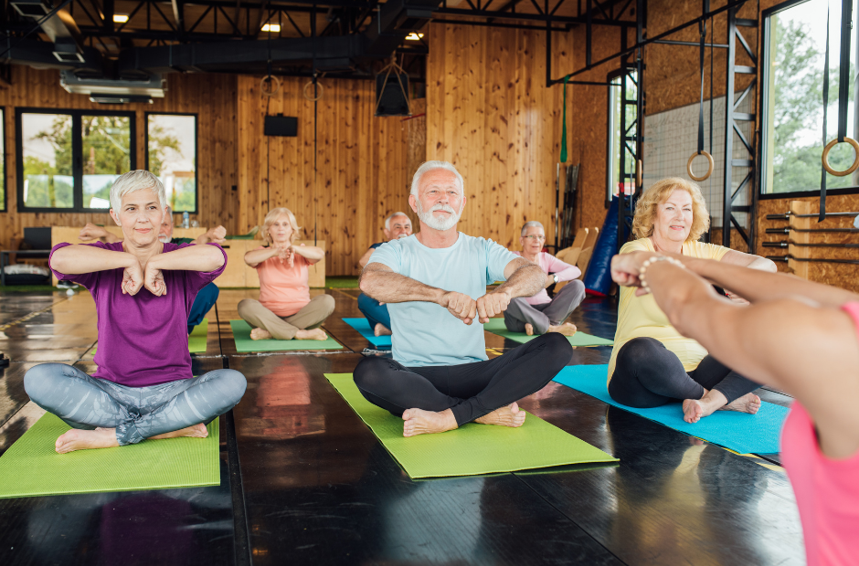In case you haven’t noticed Yoga has gone mainstream and taken the country by storm. The number of Americans doing yoga has grown by 50% in the last four years. Yoga is an ancient practice that marries physical with spiritual teachings and finds its origin thousands of years ago on the banks of the lake Kant Sarovar in the Himalayas. It is a spiritual discipline that focuses on bringing harmony between mind and body and hails as a form of art and science of healthy living.
Today, more people than ever are studying ancient yoga, breathing practices, and meditations and applying these to their daily lives. People come to the mat for varied reasons from easing back pain to relieving stress, to enjoying greater flexibility. The good news is that in the hands of a competent teacher you can tone your abs, relax your nervous system, and meditate for a deeper understanding of your spirit.
Some recent statistics give us some insights into how and why it is spreading like wildfire:
- 55 million people have started practicing yoga
- 44% of yoga practitioners go 2-3x per week
- 15 minutes of yoga practice every day changes the brains chemistry and boosts mood
- Average yoga practitioner spends $90 a month on yoga
- 54% of yoga practitioners said that yoga helps relieve tension
Seniors Benefits
You’re never too old to reap the rewards of yoga. For seniors who are looking for a safe, effective way to enhance their physical health and overall wellness, the stretching, breathing, and meditation practices of yoga can be a great solution. In fact, as you will see, doing yoga regularly can result in a host of benefits for older adults, from greater flexibility and improved balance to lower stress and better sleep. Here are some different types of yoga that you can start practicing today:
- Hatha: Not really a specific style, Hatha is a generic term that encompasses all forms of yoga that concentrate on physical postures. But in most cases, classes advertised as hatha yoga feature a slow-paced series of sitting and standing poses. They are typically about stretching and breathing, not boosting your heart rate, or getting your leg up behind your head. That’s why many people believe that Hatha is the best type of yoga for beginners.
- Iyengar:Â Iyengar yoga is methodical and precise, with a strong emphasis on proper form. Practitioners are encouraged to use props like bolsters, straps, blocks, and incline boards to help them get into the correct alignment. Because the props allow for all kinds of modifications, this is a good style of yoga for seniors with arthritis or other chronic conditions.
- Restorative:Â Restorative yoga is a slow, meditative form of yoga that is designed to release tension passively, without stretching. Props are used to totally support the body, and poses are held for a long time, sometimes up to 10 minutes. Restorative is the best type of yoga for seniors who want to cultivate relaxation and contentment. It’s not uncommon for people to fall asleep in class.
- Yin:Â Like restorative yoga, yin yoga is slow and focuses on holding poses for a long time. The difference between yin and restorative yoga is that restorative involves no active stretch, whereas in yin you work on stretching your deep connective tissues. Doing yin yoga regularly can help relieve stiffness and enhance flexibility.
- Vinyasa:Â This is a general term for yoga styles that involve matching breathing with a series of continuous movements that flow from one to another. Pacing can vary, but routines are often very fluid and quick. Vinyasa emphasizes the transitions between postures as much as the poses themselves. Some people liken it to dancing. Vinyasa yoga is hard in the sense that it tends to be physically vigorous, but seniors who are reasonably fit may enjoy the challenge.
- Ashtanga:Â Fast-paced and physically challenging, ashtanga comprises a predetermined set of poses that are performed the same way every time. It’s an intense, acrobatic activity that boosts your heart rate and circulation, which is why some people say that ashtanga is the best type of yoga for weight loss. While it is not generally recommended for beginners, some older adults find it to be greatly beneficial.
- Bikram: In Bikram yoga, rooms are typically heated to more than 100 degrees and have 40-percent humidity. That guarantees you will sweat buckets as you spend 90 minutes going through the sequence of 26 poses and two breathing techniques. The idea is to strengthen muscles and flush out body toxins. However, overheating is a real risk. If you have low or high blood pressure or some sort of heart condition, Bikram is not for you.
- Kundalini: Known as the “yoga of awareness,” kundalini can appeal to seniors who are keenly interested in the spiritual and physical components of yoga. It combines physical postures, breathing exercises, meditation, and chanting.
A Non-Traditional Option: Chair Yoga for Seniors
Not everyone is comfortable with the up-and-down movements of traditional yoga. In Chair Yoga, seniors who have mobility challenges or balance issues can enjoy the benefits of yoga without having to get down on a floor mat. A huge number of poses—from spinal twists and hip stretches to chest openers and forward bends—can be modified to be performed from a chair. If you cannot get out no worries as there are many classes available online as well.
No matter your age and physical condition, you can start where you are, explore the different options, and find what works for you. It can also be a great way to connect with others so grab your mat and start your wellness journey today! Namaste!






